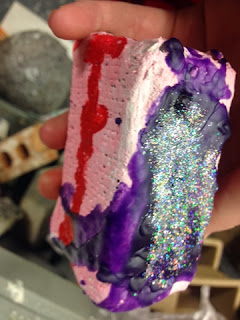1. I started of by creating a tea cake stand. I decided to try this out by using modroc and wire. As I started of i thought it would go well until I realised the modroc would not stay supported and sank. I began to get stressed and moved on to a different idea.

2. I decided to try create a tea cake holder with cardboard and tissue paper aswell. I created four tiers by using different sizes of circular objects to create a stencil. I used colourful tissue paper to cover the tiers.

3. After playing around with trying to make a cake stand I started to play with plasticine to try to create some tea party food for props.
4. Here are more tea party treats I made using by using polystyrene, modroc and wax. These turned out really well.


































